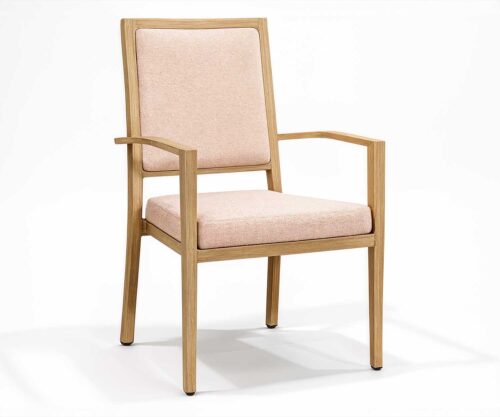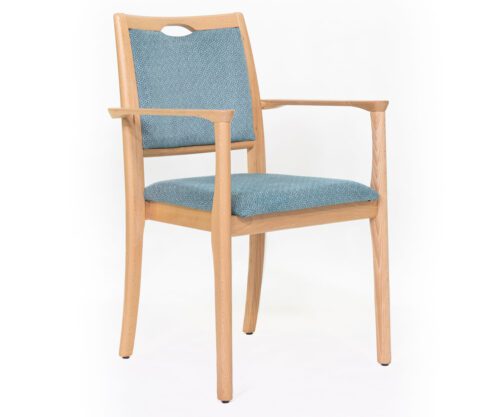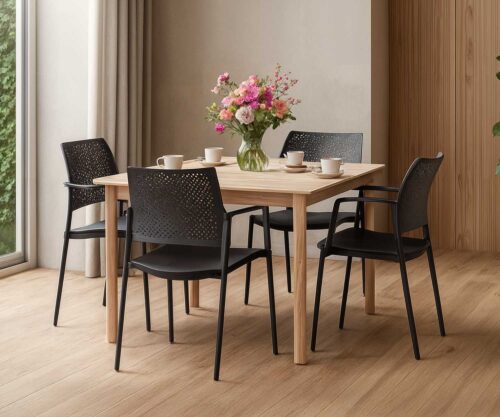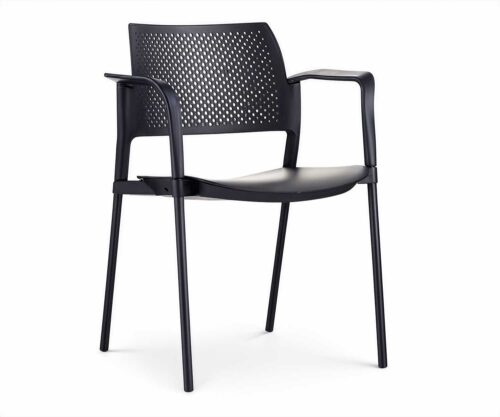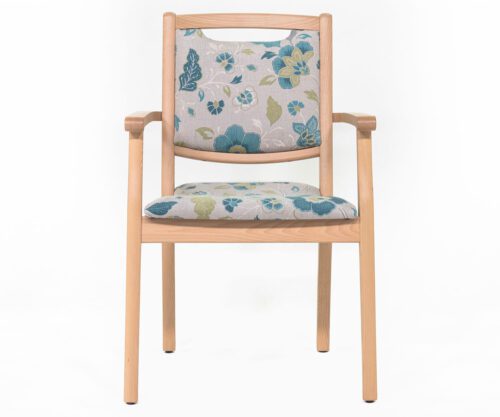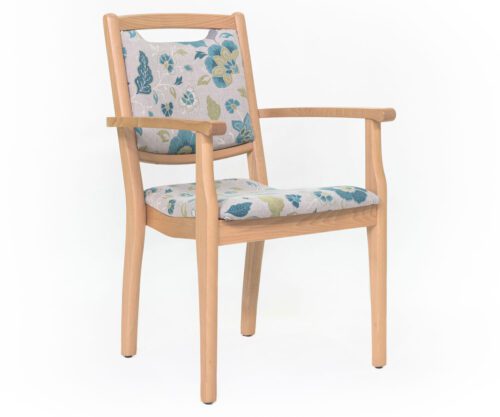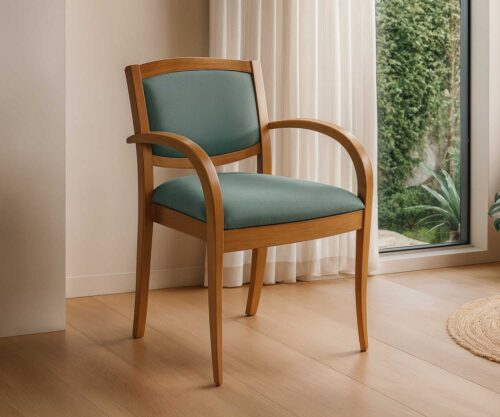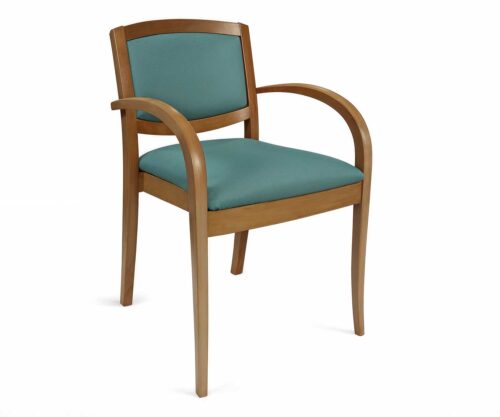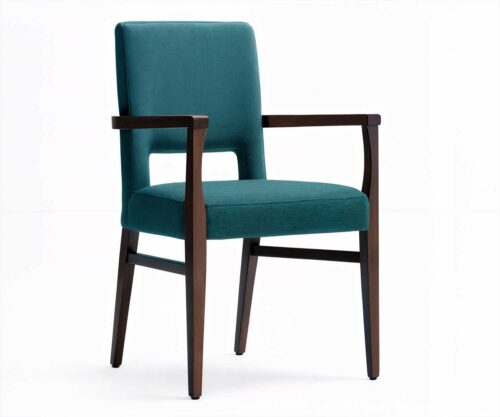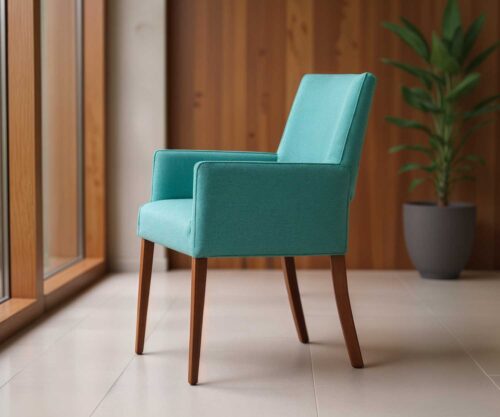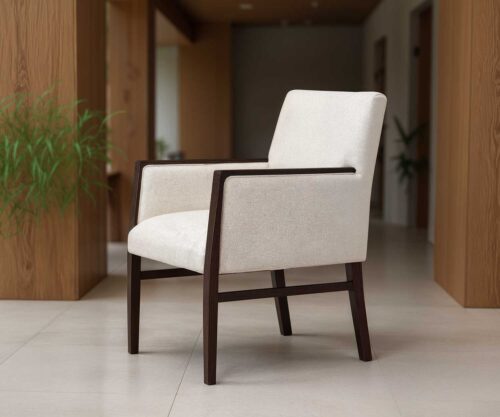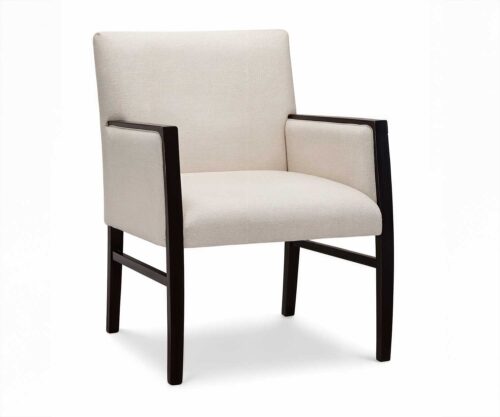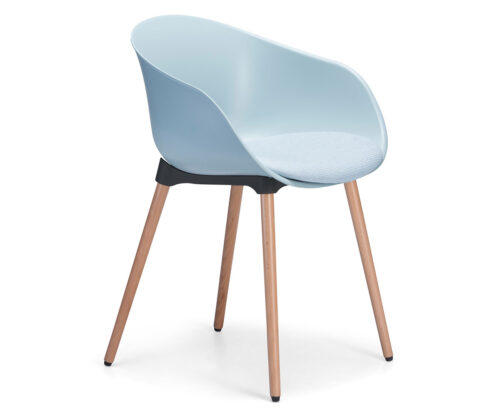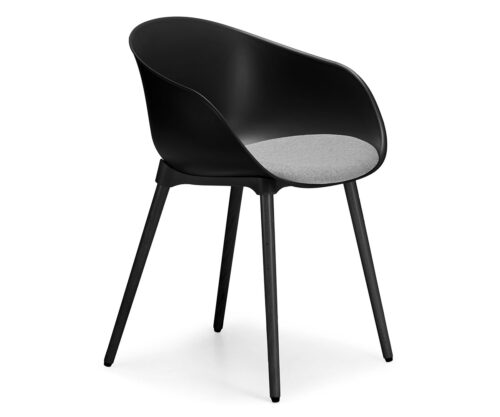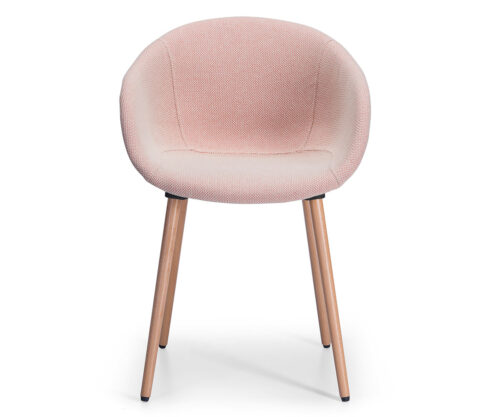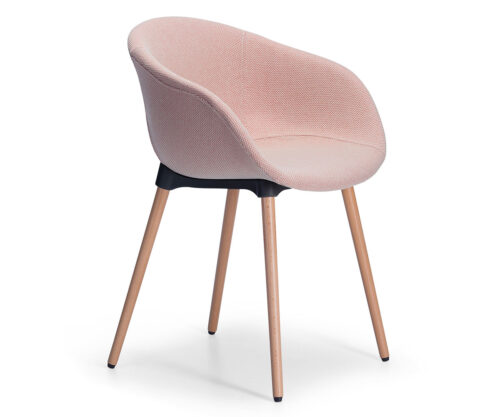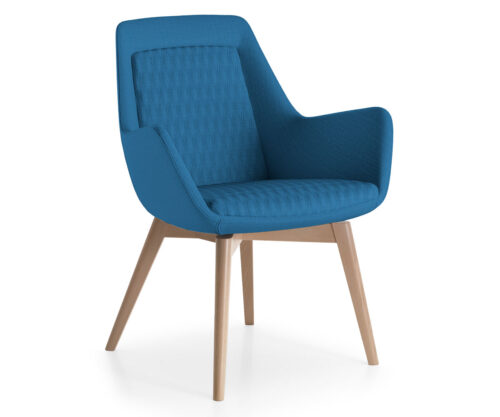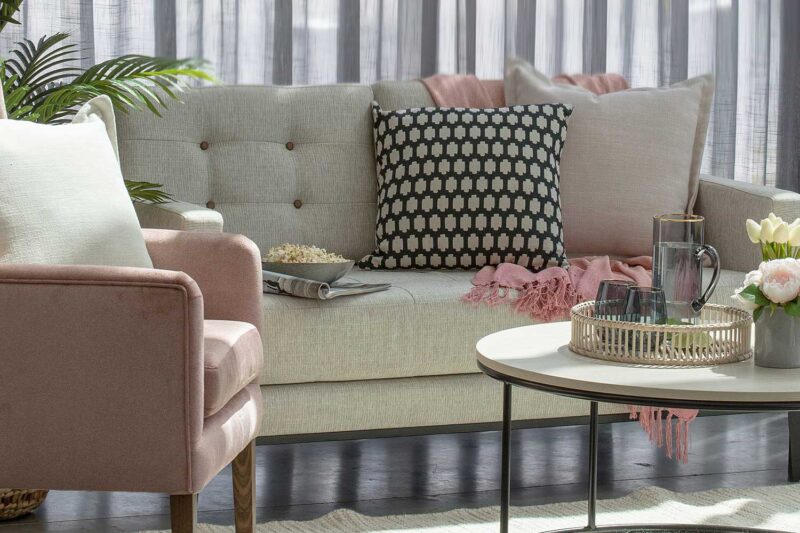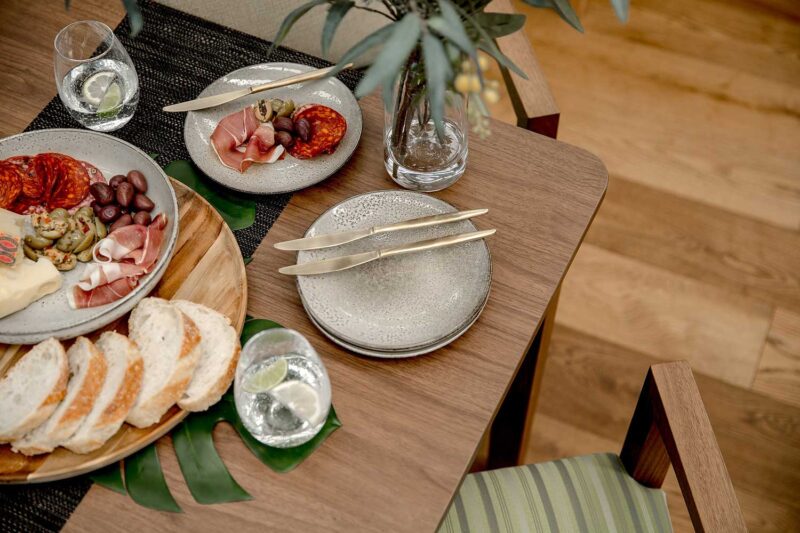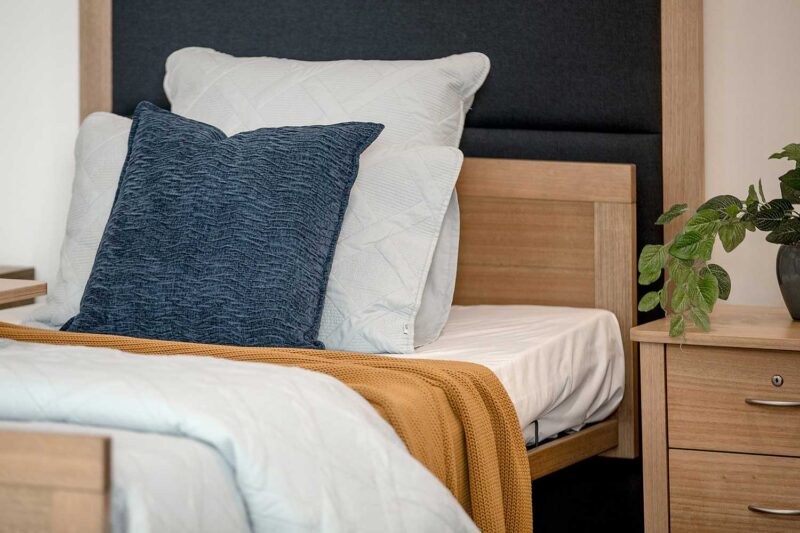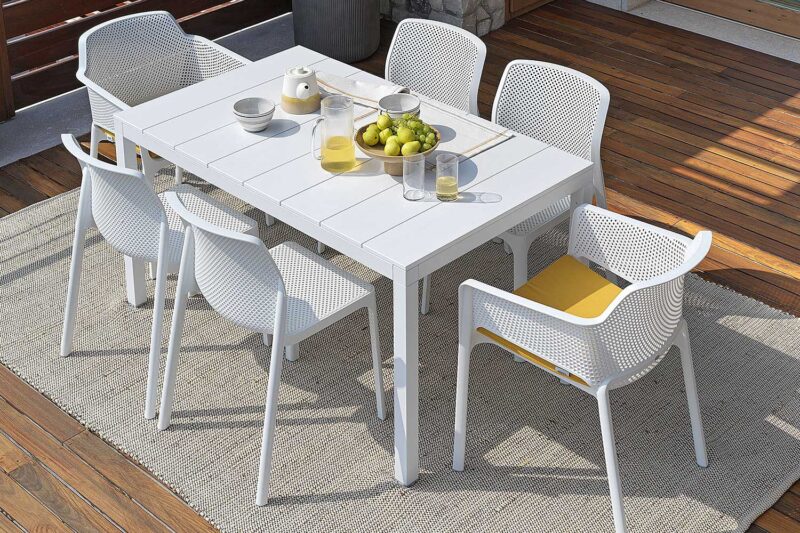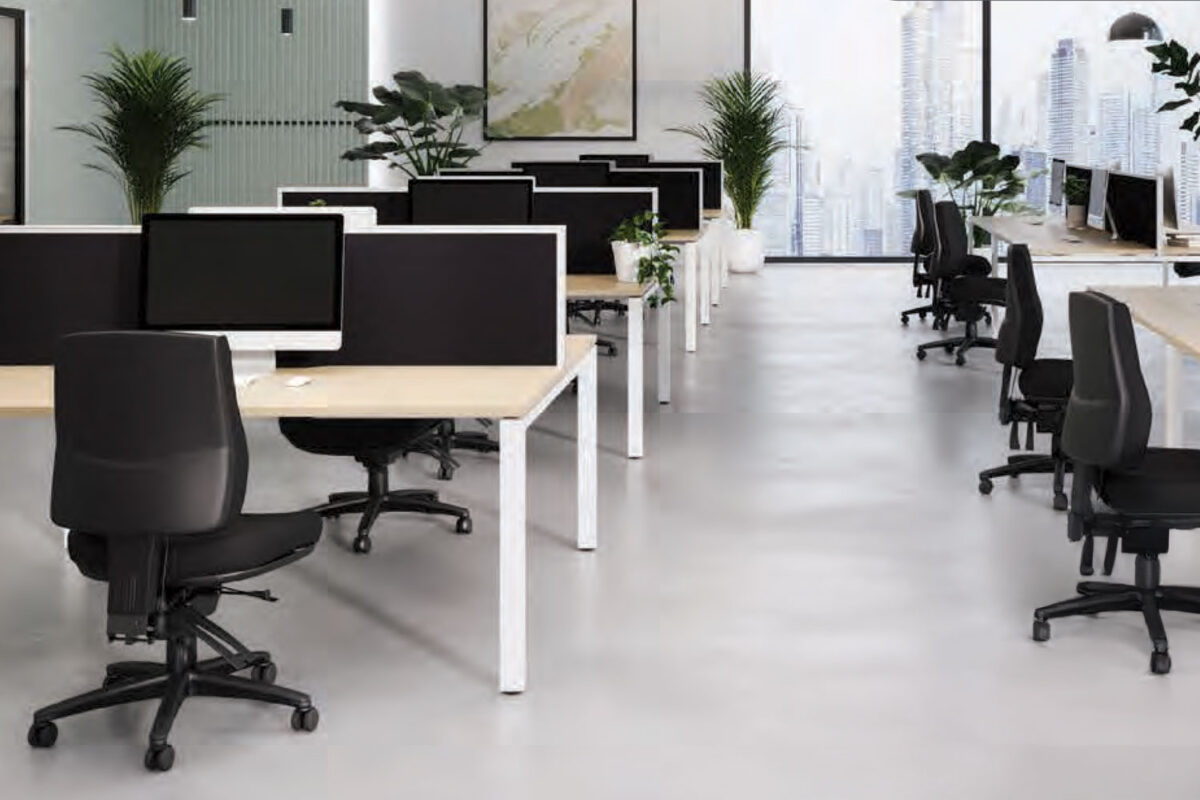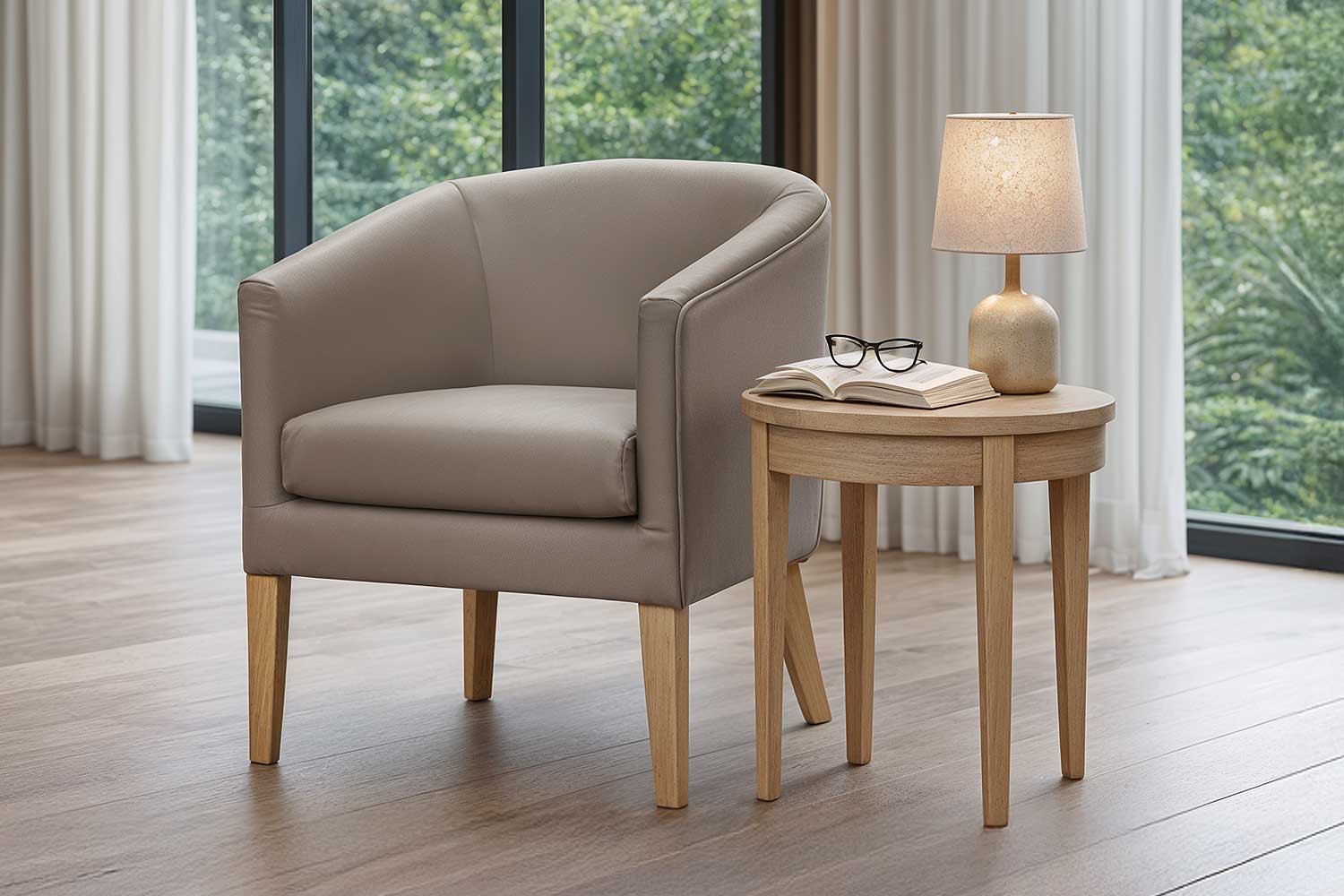[Practical Guide] Furnishing Aged Care: New Facilities vs Updating Existing Spaces

Furnishing an aged care facility is a crucial task that impacts the comfort, safety, and overall well-being of vulnerable residents. Whether you’re furnishing a new facility or updating an existing one, each scenario presents its own unique challenges and opportunities.
This guide will walk you through the differences and provide practical tips to help you make informed decisions.
Furnishing a New Aged Care Facility
Furnishing a new aged care facility offers a unique opportunity to create a comfortable, safe, and aesthetically pleasing environment from the ground up. However, the process can be both exciting and challenging, given the vast array of choices and the need to ensure every decision supports the well-being of future residents. From selecting the right furniture to designing cohesive spaces that comply with regulations, there are several key factors to consider.
Let’s delve into the specific challenges and offer practical tips to guide you through this process effectively.
Challenges
- Blank Slate: Starting from scratch can be both exciting and daunting. With an entire facility to furnish, the number of choices can be overwhelming.
- No Resident Feedback: Without current residents, it’s difficult to gather preferences and specific needs directly from those who will use the furniture.
- Budget Constraints: Allocating budget effectively across all necessary furnishings while ensuring quality and comfort can be challenging.
- Design Coordination: Ensuring all pieces fit the overall design and aesthetic vision for the facility is crucial.
- Regulatory Compliance: Ensuring all furniture meets safety and health standards from the outset is essential.
Tips
Consult Experts
When considering design, close collaboration with furniture project consultants specializing in aged care is crucial for informed decisions. These experts understand aged care needs such as safety, accessibility, and comfort, offering insights into layout planning, furniture selection, and material choices tailored to elderly residents’ requirements.
Additionally, working with interior designers experienced in healthcare settings ensures seamless integration of both aesthetic and functional elements, contributing to environments that enhance resident well-being and comfort, ultimately elevating their quality of life.
Prioritize Needs
When furnishing an aged care facility, prioritize residents’ needs in key areas like resident rooms, common spaces, and dining areas.
Resident rooms should feature comfortable, functional furniture that supports daily activities and enhances personal space.
Common areas, such as lounges and recreation rooms, should provide flexible seating arrangements to foster social interaction and relaxation.
Dining areas should be equipped with practical dining tables and chairs that are easy to maintain and ensure comfort for elderly individuals. This focus ensures that essential aspects of the facility are addressed effectively from the outset.
Modular and Flexible Solutions
Opting for modular and flexible furniture solutions allows aged care facilities to easily adapt to evolving needs. Modular furniture pieces, like modular seating systems and adjustable-height tables, enable quick reconfiguration of spaces to suit various activities and group sizes. This flexibility proves especially advantageous in common areas and therapy rooms, where furniture requirements often shift based on resident preferences or therapeutic sessions. Moreover, modular designs simplify maintenance and replacement of individual components, minimizing downtime and operational disruptions within the facility.
Ergonomics and Comfort
Prioritize ergonomically designed furniture to guarantee comfort and safety for residents.
Consult healthcare experts, including physiotherapists and occupational therapists, during the consultation phase. Their input ensures that furniture meets residents’ physical and health requirements.
Future-Proofing
Considering the potential future needs of residents is crucial when selecting furniture for an aged care facility. Aged care environments should anticipate changes in resident demographics, advancements in healthcare practices, and evolving regulatory requirements. Choosing adaptable furniture designs and durable materials ensures long-term longevity and cost-effectiveness.
Additionally, selecting high-quality materials that are easy to clean and maintain extends the lifespan of furniture, thereby reducing replacement costs over time. By future-proofing furniture choices, you enhance the sustainability and efficiency of your aged care facility, maintaining a comfortable and supportive environment for residents.
Furnishing an Existing Aged Care Facility
Updating the furniture in an existing aged care facility requires careful planning and consideration to ensure a smooth transition and minimal disruption to daily operations.
Unlike furnishing a new facility, the process involves integrating new pieces with the existing decor and meeting the evolving needs of current residents.
Balancing functionality, comfort, and aesthetic appeal is key to creating a cohesive and welcoming environment. Here, we explore the unique challenges faced and provide practical tips to help you navigate the complexities of updating your aged care facility’s furnishings.
Challenges
- Integration: New furniture needs to complement existing pieces and the overall decor.
- Minimizing Disruption: Replacing or adding furniture without causing significant disruption to residents’ daily lives is important.
- Resident Preferences: Balancing diverse preferences and needs of current residents can be tricky.
- Wear and Tear: Ensuring new pieces match the durability and quality of existing furnishings is crucial.
- Space Constraints: Working within the spatial limitations of an already furnished facility can be challenging.
Tips
Resident Feedback
Involving residents in the decision-making process when updating furniture in an existing aged care facility is essential to ensure their comfort and satisfaction. Organize feedback sessions or surveys to gather insights into their preferences, comfort levels, and specific needs. Residents provide valuable input on the functionality and usability of furniture based on their daily experiences. Actively listening to their feedback and integrating their preferences into decisions fosters a sense of empowerment and ownership. This approach enhances their quality of life and strengthens community engagement within the facility.
Phased Approach
To minimize disruption and help residents adapt gradually to new furniture in an existing aged care facility, prioritize updates in high-traffic areas like common spaces, dining areas, and resident rooms. Break down the renovation or replacement process into manageable stages to lessen the impact on daily operations and resident routines. This phased approach enables staff and residents to adjust slowly to the changes, ensuring a smoother transition and maximizing each update’s effectiveness. It also allows flexibility to address unexpected challenges or make adjustments based on continuous feedback from residents and staff.
Mix and Match
Choosing versatile furniture pieces that seamlessly blend with existing furnishings enhances the aesthetic coherence of an aged care facility while meeting diverse functional needs. Select furniture designs that complement the existing decor and layout, thereby creating a cohesive environment throughout the facility. Mix and match various styles, materials, and colours to achieve visually appealing contrasts or harmonious combinations. This approach revitalizes the space and encourages creative expression and personalization in different areas of the facility. Additionally, consider modular furniture systems or adaptive designs that easily integrate with existing pieces, promoting flexibility and adaptability as resident needs evolve over time.
Focus on High-Traffic Areas
Prioritizing updates in high-traffic areas within an existing aged care facility ensures that furniture investments effectively meet usage patterns and wear. Reception areas, corridors, dining rooms, and lounges, which often experience the most foot traffic, require durable and easy-to-maintain furniture solutions. Choose robust materials and finishes that withstand frequent use and cleaning protocols while maintaining aesthetics and comfort. Focusing resources on these critical areas optimizes the impact of furniture updates on resident comfort and facility aesthetics, extending the lifespan of furnishings in demanding environments.
Customisation
Choosing custom furniture options provides a tailored approach to meeting specific needs and preferences within an existing aged care facility. Furniture manufacturers or suppliers offering bespoke services can design customized solutions that match the existing decor, accommodate layout constraints, and fulfill functional requirements across different areas within the facility. Whether adjusting furniture dimensions to fit unique room configurations or incorporating specialized features for accessibility and comfort, customization ensures seamless integration with the existing environment. Collaborating closely with these suppliers allows exploration of tailored solutions that address specific challenges or enhance the functionality of resident spaces. This personalized approach not only improves the overall aesthetics and usability of the facility but also demonstrates a commitment to meeting the individual needs of residents and staff alike.
General Tips for Both Scenarios
Safety and Accessibility
Safety and accessibility are critical in aged care facilities. Prioritize safety features like rounded edges to prevent injuries from accidental bumps or falls. Use non-slip materials on seating and flooring to reduce the risk of slips and falls, particularly in areas prone to moisture or spills. Additionally, select furniture with easy-to-clean surfaces that resist bacterial growth, stains, and damage. These features not only enhance resident safety but also streamline maintenance, promoting a hygienic environment essential for their well-being.
Comfort and Well-Being
Choosing fit-for-purpose furniture that enhances residents’ physical well-being and comfort is crucial for their overall quality of life.
Opt for ergonomic furniture designs that support the back, neck, and limbs, especially beneficial for elderly individuals with mobility issues or chronic conditions.
Adjustable features in chairs and beds enable personalized comfort settings to meet diverse needs and preferences.
Upholstered seating with sufficient cushioning and breathable fabrics not only enhances comfort but also improves circulation and promotes skin health.
Emphasizing comfort helps reduce stress, enhance sleep quality, and improve mobility among residents, thereby creating a positive living environment in aged care settings.
Durability
Choosing high-quality, durable furniture materials is essential to endure daily use in aged care facilities. Select sturdy frames from materials like hardwood or metal for stability and longevity. Upholstery fabrics should be durable, stain-resistant, and easy to clean to maintain their appearance and function over time. Opt for furniture with reinforced joints and mechanisms capable of frequent adjustments without compromising structural integrity. Durable materials not only reduce the need for replacements but also promote sustainability by cutting down on waste and resource consumption in the long run.
Aesthetics
Choosing furniture that creates a warm and inviting atmosphere significantly enhances the well-being and comfort of aged care facility residents.
Opt for colours, textures, and designs that evoke homeliness and comfort, fostering a positive emotional environment. Use soft, neutral tones and natural materials to promote a calming effect, and add personal touches like artwork or decorative accents to enhance communal spaces.
Arrange furniture to maximize natural light and create inviting areas that encourage social interaction among residents and visitors.
Aesthetic decisions are not just about decoration; they are crucial in cultivating a sense of belonging and emotional well-being for residents.
Feedback Loop
To continuously improve furniture choices and arrangements in aged care facilities, establish a structured feedback loop involving residents, families, and staff. Regularly gather input on comfort, usability, and preferences through surveys, focus groups, or one-on-one discussions with residents. Encourage staff to share insights based on their interactions and observations regarding furniture performance and maintenance challenges. Analyzing this feedback helps facilities identify areas for improvement, promptly address concerns, and implement changes that enhance resident satisfaction and well-being.
Whether you’re furnishing a new aged care facility or updating an existing one, the key is to balance practicality with comfort and aesthetic appeal. By understanding the unique challenges of each scenario and following these practical tips, you can create a welcoming and safe environment that enhances the quality of life for residents. Remember, the right furniture not only provides comfort but also contributes significantly to the overall atmosphere and functionality of the space.
Australian Made Commercial Furniture: Suitable for Aged Care, Retirement Living and Other Accommodation Spaces
More News
[Practical Guide] Furnishing Aged Care: New Facilities vs Updating Existing Spaces

Furnishing an aged care facility is a crucial task that impacts the comfort, safety, and overall well-being of vulnerable residents. Whether you’re furnishing a new facility or updating an existing one, each scenario presents its own unique challenges and opportunities.
This guide will walk you through the differences and provide practical tips to help you make informed decisions.
Furnishing a New Aged Care Facility
Furnishing a new aged care facility offers a unique opportunity to create a comfortable, safe, and aesthetically pleasing environment from the ground up. However, the process can be both exciting and challenging, given the vast array of choices and the need to ensure every decision supports the well-being of future residents. From selecting the right furniture to designing cohesive spaces that comply with regulations, there are several key factors to consider.
Let’s delve into the specific challenges and offer practical tips to guide you through this process effectively.
Challenges
- Blank Slate: Starting from scratch can be both exciting and daunting. With an entire facility to furnish, the number of choices can be overwhelming.
- No Resident Feedback: Without current residents, it’s difficult to gather preferences and specific needs directly from those who will use the furniture.
- Budget Constraints: Allocating budget effectively across all necessary furnishings while ensuring quality and comfort can be challenging.
- Design Coordination: Ensuring all pieces fit the overall design and aesthetic vision for the facility is crucial.
- Regulatory Compliance: Ensuring all furniture meets safety and health standards from the outset is essential.
Tips
Consult Experts
When considering design, close collaboration with furniture project consultants specializing in aged care is crucial for informed decisions. These experts understand aged care needs such as safety, accessibility, and comfort, offering insights into layout planning, furniture selection, and material choices tailored to elderly residents’ requirements.
Additionally, working with interior designers experienced in healthcare settings ensures seamless integration of both aesthetic and functional elements, contributing to environments that enhance resident well-being and comfort, ultimately elevating their quality of life.
Prioritize Needs
When furnishing an aged care facility, prioritize residents’ needs in key areas like resident rooms, common spaces, and dining areas.
Resident rooms should feature comfortable, functional furniture that supports daily activities and enhances personal space.
Common areas, such as lounges and recreation rooms, should provide flexible seating arrangements to foster social interaction and relaxation.
Dining areas should be equipped with practical dining tables and chairs that are easy to maintain and ensure comfort for elderly individuals. This focus ensures that essential aspects of the facility are addressed effectively from the outset.
Modular and Flexible Solutions
Opting for modular and flexible furniture solutions allows aged care facilities to easily adapt to evolving needs. Modular furniture pieces, like modular seating systems and adjustable-height tables, enable quick reconfiguration of spaces to suit various activities and group sizes. This flexibility proves especially advantageous in common areas and therapy rooms, where furniture requirements often shift based on resident preferences or therapeutic sessions. Moreover, modular designs simplify maintenance and replacement of individual components, minimizing downtime and operational disruptions within the facility.
Ergonomics and Comfort
Prioritize ergonomically designed furniture to guarantee comfort and safety for residents.
Consult healthcare experts, including physiotherapists and occupational therapists, during the consultation phase. Their input ensures that furniture meets residents’ physical and health requirements.
Future-Proofing
Considering the potential future needs of residents is crucial when selecting furniture for an aged care facility. Aged care environments should anticipate changes in resident demographics, advancements in healthcare practices, and evolving regulatory requirements. Choosing adaptable furniture designs and durable materials ensures long-term longevity and cost-effectiveness.
Additionally, selecting high-quality materials that are easy to clean and maintain extends the lifespan of furniture, thereby reducing replacement costs over time. By future-proofing furniture choices, you enhance the sustainability and efficiency of your aged care facility, maintaining a comfortable and supportive environment for residents.
Furnishing an Existing Aged Care Facility
Updating the furniture in an existing aged care facility requires careful planning and consideration to ensure a smooth transition and minimal disruption to daily operations.
Unlike furnishing a new facility, the process involves integrating new pieces with the existing decor and meeting the evolving needs of current residents.
Balancing functionality, comfort, and aesthetic appeal is key to creating a cohesive and welcoming environment. Here, we explore the unique challenges faced and provide practical tips to help you navigate the complexities of updating your aged care facility’s furnishings.
Challenges
- Integration: New furniture needs to complement existing pieces and the overall decor.
- Minimizing Disruption: Replacing or adding furniture without causing significant disruption to residents’ daily lives is important.
- Resident Preferences: Balancing diverse preferences and needs of current residents can be tricky.
- Wear and Tear: Ensuring new pieces match the durability and quality of existing furnishings is crucial.
- Space Constraints: Working within the spatial limitations of an already furnished facility can be challenging.
Tips
Resident Feedback
Involving residents in the decision-making process when updating furniture in an existing aged care facility is essential to ensure their comfort and satisfaction. Organize feedback sessions or surveys to gather insights into their preferences, comfort levels, and specific needs. Residents provide valuable input on the functionality and usability of furniture based on their daily experiences. Actively listening to their feedback and integrating their preferences into decisions fosters a sense of empowerment and ownership. This approach enhances their quality of life and strengthens community engagement within the facility.
Phased Approach
To minimize disruption and help residents adapt gradually to new furniture in an existing aged care facility, prioritize updates in high-traffic areas like common spaces, dining areas, and resident rooms. Break down the renovation or replacement process into manageable stages to lessen the impact on daily operations and resident routines. This phased approach enables staff and residents to adjust slowly to the changes, ensuring a smoother transition and maximizing each update’s effectiveness. It also allows flexibility to address unexpected challenges or make adjustments based on continuous feedback from residents and staff.
Mix and Match
Choosing versatile furniture pieces that seamlessly blend with existing furnishings enhances the aesthetic coherence of an aged care facility while meeting diverse functional needs. Select furniture designs that complement the existing decor and layout, thereby creating a cohesive environment throughout the facility. Mix and match various styles, materials, and colours to achieve visually appealing contrasts or harmonious combinations. This approach revitalizes the space and encourages creative expression and personalization in different areas of the facility. Additionally, consider modular furniture systems or adaptive designs that easily integrate with existing pieces, promoting flexibility and adaptability as resident needs evolve over time.
Focus on High-Traffic Areas
Prioritizing updates in high-traffic areas within an existing aged care facility ensures that furniture investments effectively meet usage patterns and wear. Reception areas, corridors, dining rooms, and lounges, which often experience the most foot traffic, require durable and easy-to-maintain furniture solutions. Choose robust materials and finishes that withstand frequent use and cleaning protocols while maintaining aesthetics and comfort. Focusing resources on these critical areas optimizes the impact of furniture updates on resident comfort and facility aesthetics, extending the lifespan of furnishings in demanding environments.
Customisation
Choosing custom furniture options provides a tailored approach to meeting specific needs and preferences within an existing aged care facility. Furniture manufacturers or suppliers offering bespoke services can design customized solutions that match the existing decor, accommodate layout constraints, and fulfill functional requirements across different areas within the facility. Whether adjusting furniture dimensions to fit unique room configurations or incorporating specialized features for accessibility and comfort, customization ensures seamless integration with the existing environment. Collaborating closely with these suppliers allows exploration of tailored solutions that address specific challenges or enhance the functionality of resident spaces. This personalized approach not only improves the overall aesthetics and usability of the facility but also demonstrates a commitment to meeting the individual needs of residents and staff alike.
General Tips for Both Scenarios
Safety and Accessibility
Safety and accessibility are critical in aged care facilities. Prioritize safety features like rounded edges to prevent injuries from accidental bumps or falls. Use non-slip materials on seating and flooring to reduce the risk of slips and falls, particularly in areas prone to moisture or spills. Additionally, select furniture with easy-to-clean surfaces that resist bacterial growth, stains, and damage. These features not only enhance resident safety but also streamline maintenance, promoting a hygienic environment essential for their well-being.
Comfort and Well-Being
Choosing fit-for-purpose furniture that enhances residents’ physical well-being and comfort is crucial for their overall quality of life.
Opt for ergonomic furniture designs that support the back, neck, and limbs, especially beneficial for elderly individuals with mobility issues or chronic conditions.
Adjustable features in chairs and beds enable personalized comfort settings to meet diverse needs and preferences.
Upholstered seating with sufficient cushioning and breathable fabrics not only enhances comfort but also improves circulation and promotes skin health.
Emphasizing comfort helps reduce stress, enhance sleep quality, and improve mobility among residents, thereby creating a positive living environment in aged care settings.
Durability
Choosing high-quality, durable furniture materials is essential to endure daily use in aged care facilities. Select sturdy frames from materials like hardwood or metal for stability and longevity. Upholstery fabrics should be durable, stain-resistant, and easy to clean to maintain their appearance and function over time. Opt for furniture with reinforced joints and mechanisms capable of frequent adjustments without compromising structural integrity. Durable materials not only reduce the need for replacements but also promote sustainability by cutting down on waste and resource consumption in the long run.
Aesthetics
Choosing furniture that creates a warm and inviting atmosphere significantly enhances the well-being and comfort of aged care facility residents.
Opt for colours, textures, and designs that evoke homeliness and comfort, fostering a positive emotional environment. Use soft, neutral tones and natural materials to promote a calming effect, and add personal touches like artwork or decorative accents to enhance communal spaces.
Arrange furniture to maximize natural light and create inviting areas that encourage social interaction among residents and visitors.
Aesthetic decisions are not just about decoration; they are crucial in cultivating a sense of belonging and emotional well-being for residents.
Feedback Loop
To continuously improve furniture choices and arrangements in aged care facilities, establish a structured feedback loop involving residents, families, and staff. Regularly gather input on comfort, usability, and preferences through surveys, focus groups, or one-on-one discussions with residents. Encourage staff to share insights based on their interactions and observations regarding furniture performance and maintenance challenges. Analyzing this feedback helps facilities identify areas for improvement, promptly address concerns, and implement changes that enhance resident satisfaction and well-being.
Whether you’re furnishing a new aged care facility or updating an existing one, the key is to balance practicality with comfort and aesthetic appeal. By understanding the unique challenges of each scenario and following these practical tips, you can create a welcoming and safe environment that enhances the quality of life for residents. Remember, the right furniture not only provides comfort but also contributes significantly to the overall atmosphere and functionality of the space.
Australian Made Commercial Furniture: Suitable for Aged Care, Retirement Living and Other Accommodation Spaces
Discover the FHG Look Book: Your Source of Inspiration for Quality Australian-Made Commercial Furniture
- Quality Craftsmanship: See why we’ve been a trusted partner for over 25 years.
- Local Excellence: Learn how our Brisbane team ensures the highest standards.
- Inspiration and Ideas: Find innovative furniture solutions for any environment.
Don’t miss the opportunity to transform your commercial space with FHG’s expertly crafted furniture. Download the FHG Look Book today and start your journey towards exceptional design and quality.


